Set against Vietnam’s legendary misty mountains, shopping in Sapa is an experience all its own. This isn’t just any marketplace visit; it’s a colorful window into the life, culture, and craftsmanship of Vietnam’s highland communities. Here, you’ll discover goods that carry the weight of tradition, from handmade textiles dyed in natural indigo to intricate silver jewelry crafted with ancestral techniques. Each item tells a story, each marketplace hums with local life, and each discovery feels like a treasure—this is the magic of shopping in Sapa.
I. Why Shopping in Sapa is Unlike Anywhere Else
Imagine walking through a bustling market where vibrant textiles, intricate patterns, and the hum of friendly bargaining fill the air. Shopping in Sapa isn’t just a list of items to buy; it’s a journey through a living museum of culture. The items sold here aren’t just souvenirs—they’re pieces of heritage shaped by skilled hands and the mountain landscapes that inspire them. The Black Hmong, Red Dao, Tay, and other ethnic groups make and sell their goods, sharing a bit of their identity with each piece.
Shopping in Sapa isn’t just about what you bring home; it’s about what you discover along the way.

Shopping in Sapa is a journey that immerses you in local culture
II. Sapa’s Best Markets: Where Tradition Meets Discovery
1. Sapa Market – The Heartbeat of the Highlands
Located right in the heart of town, Sapa Market is an essential stop for anyone looking to dive into shopping in Sapa. Here, you’ll find everything from fresh produce to hand-dyed fabrics, each stall an invitation to explore the creativity of the region’s artisans. As you walk through, you’ll meet Black Hmong women selling their signature indigo-dyed clothes and Red Dao women displaying traditional scarves and belts.
This market is alive with the sounds and colors of Sapa, giving you an instant connection to its people and culture.
2. Bac Ha Market (Sundays Only) – A Cultural Extravaganza
If you want a truly immersive experience, visit Bac Ha Market, about three hours from Sapa. Only held on Sundays, this market is a sight to behold, where locals from various ethnic groups gather to trade goods and share news. With its sprawling sections, you’ll find sections devoted to handwoven textiles, fragrant spices, medicinal herbs, and even livestock.
For many travelers, shopping in Sapa wouldn’t be complete without the vibrant colors and festive atmosphere of Bac Ha Market, where shopping becomes a cultural celebration.

Shopping in Sapa: The Bac Ha Market bursts with color every Sunday
3. Can Cau Market (Saturdays Only) – A Hidden Gem in the Mountains
Smaller and more intimate, Can Cau Market, held every Saturday, offers a quieter but equally memorable shopping in Sapa experience. It’s nestled among scenic mountains, creating a picturesque backdrop for your shopping adventure. Here, you’ll find traditional clothing and accessories specific to the Flower Hmong, including elaborately embroidered skirts and belts. The market has a peaceful charm, making it an ideal stop for those seeking authenticity and a slower pace.
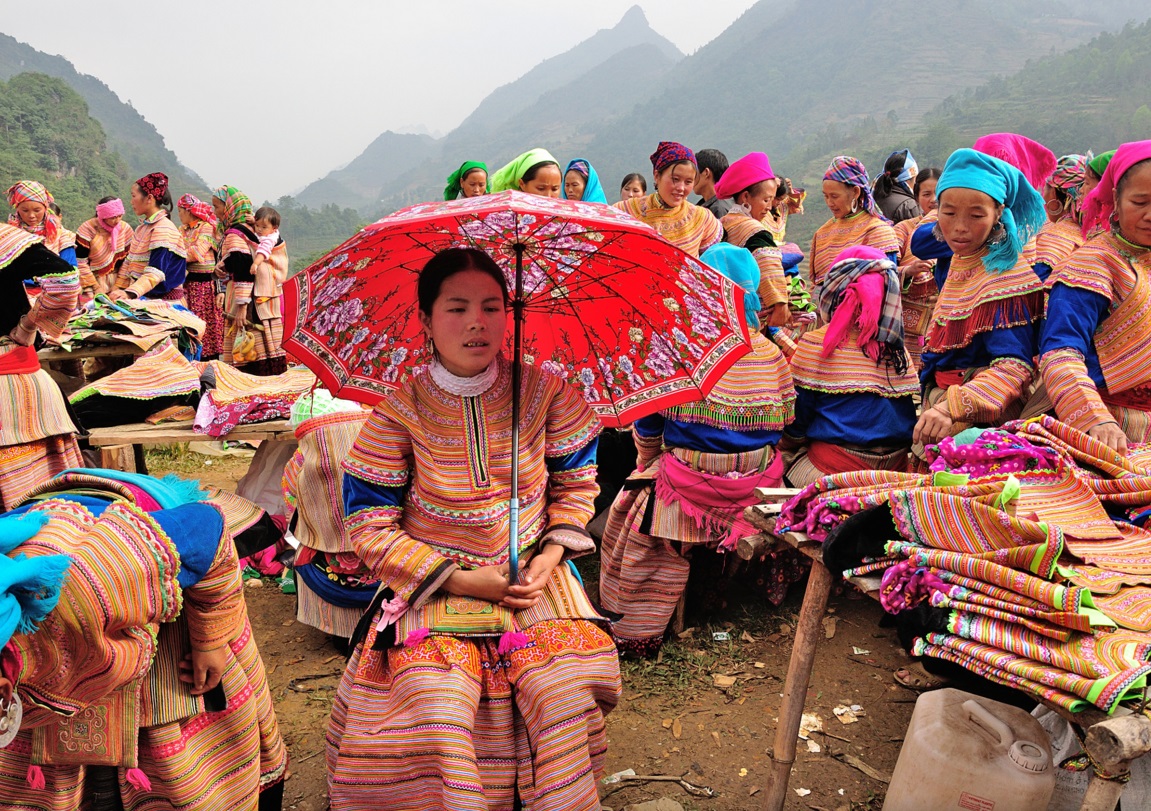
Shopping in Sapa: Can Cau Market shines brightly amid the mountains
4. Coc Ly Market (Tuesdays Only) – Along the Banks of the Chay River
Held every Tuesday by the Chay River, Coc Ly Market is perfect for those who crave an off-the-beaten-path shopping adventure. Here, you’ll find a mix of ethnic goods, from herbal medicine to handwoven bags, alongside fresh produce and fish caught in the river. This market is smaller and quieter, offering a rare glimpse into local life. After shopping, hop on a riverboat to complete the experience with a scenic ride through the highlands.
III. Must-Buy Items When Shopping in Sapa
Sapa is known for its unique handicrafts, each item bearing a cultural significance that makes it more than just a souvenir. Here’s a closer look at some must-buy items when shopping in Sapa:
1. Handwoven Textiles
The Black Hmong, Red Dao, and other local groups are known for their exceptional textile work, often created through painstakingly slow traditional methods. You’ll find blankets, bags, scarves, and more, all woven with natural fibers and dyed with natural pigments, often indigo. These textiles showcase unique patterns and colors that reflect each group’s heritage. A textile from Sapa isn’t just an accessory; it’s a piece of history and artistry.
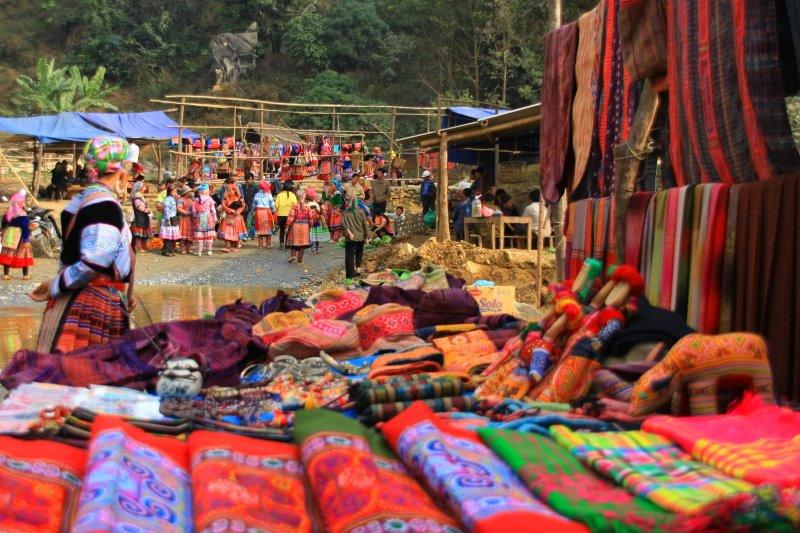
Shopping in Sapa: Traditional Handwoven Textiles by Locals
2. Silver Jewelry
The Hmong people are skilled silversmiths, and shopping in Sapa offers a rare opportunity to own a piece of their silverwork. Crafted with intricate designs inspired by the mountains and rivers, the jewelry is often symbolic of strength, protection, and prosperity. Whether you’re looking for a simple ring, a bold bracelet, or an intricate necklace, these pieces are both beautiful and meaningful.
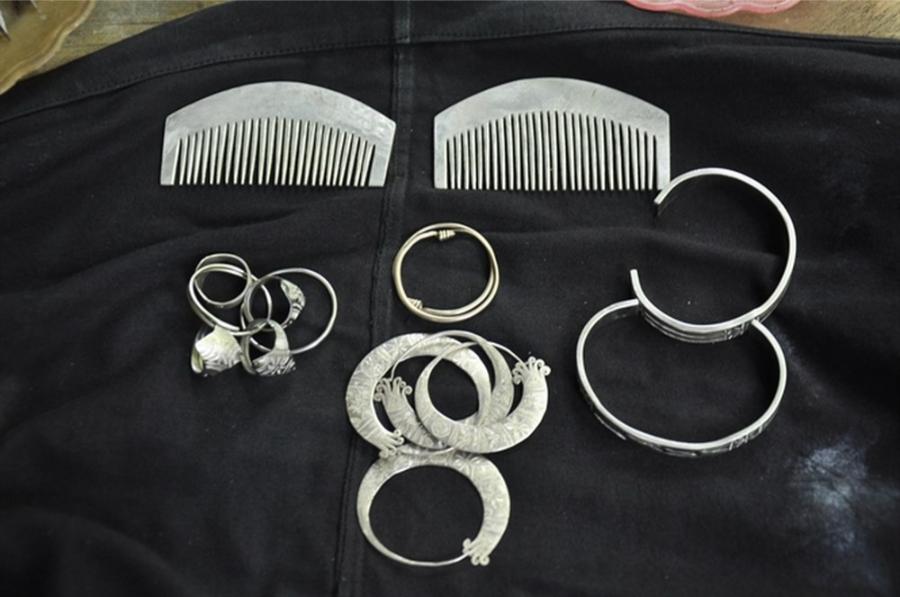
Shopping in Sapa: Silver jewelry here makes a wonderful gift for women
3. Traditional Herbal Remedies
The Red Dao people are renowned for their medicinal knowledge, using herbs from the surrounding forests to create healing remedies. Among the most popular are dried herbs for traditional Red Dao herbal baths, believed to relieve stress and improve blood circulation. These are sold in bundles that make it easy to recreate the experience at home, letting you bring a bit of Sapa’s natural wellness culture with you.
4. Ethnic Clothing and Accessories
In Sapa, each ethnic group has its own style of traditional dress, often with vibrant colors and bold patterns. Shopping in Sapa gives you the chance to purchase authentic ethnic clothing or accessories that aren’t only visually stunning but carry cultural significance. Whether it’s a Hmong skirt or a Dao belt, these pieces make for unforgettable keepsakes or even striking home decor.
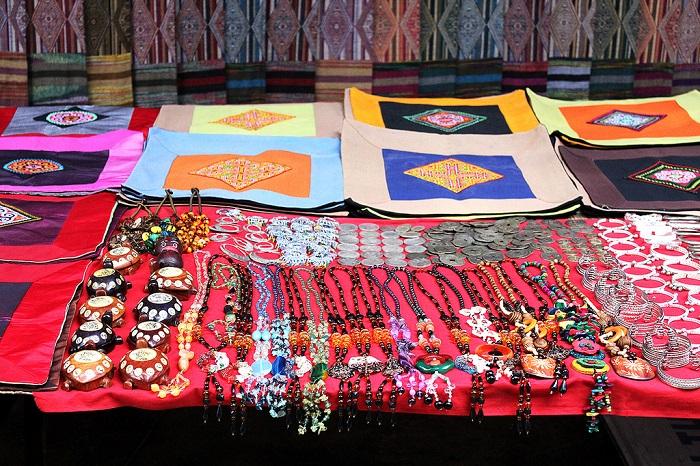
Shopping in Sapa is not just about bringing home souvenirs; it’s about bringing home memories
IV. Shopping Tips for an Enriching Experience
- Respect the Art of Bargaining: Bargaining is common here, but remember, every piece has a story and supports the livelihood of a local family. Bargain with respect, and you’ll find that it becomes more of a friendly exchange than a transaction.
- Learn the Stories: Many sellers are happy to share the stories and meanings behind their crafts. Don’t be afraid to ask questions—you’ll gain a deeper appreciation for the work and effort put into each item.
- Choose Local Over Commercial: Sapa’s unique markets support generations-old trades. By purchasing from local artisans, you’re supporting cultural preservation and helping communities thrive.
- Come Prepared with Cash: Most markets in Sapa don’t accept cards, so come with cash. Vietnamese Dong is preferred, and it’s best to bring small bills to make transactions easier.
- Take Your Time: Shopping in Sapa isn’t meant to be rushed. Wander, explore, and allow yourself the time to engage with each vendor and item. It’s a journey through a world that still honors tradition and craftsmanship.
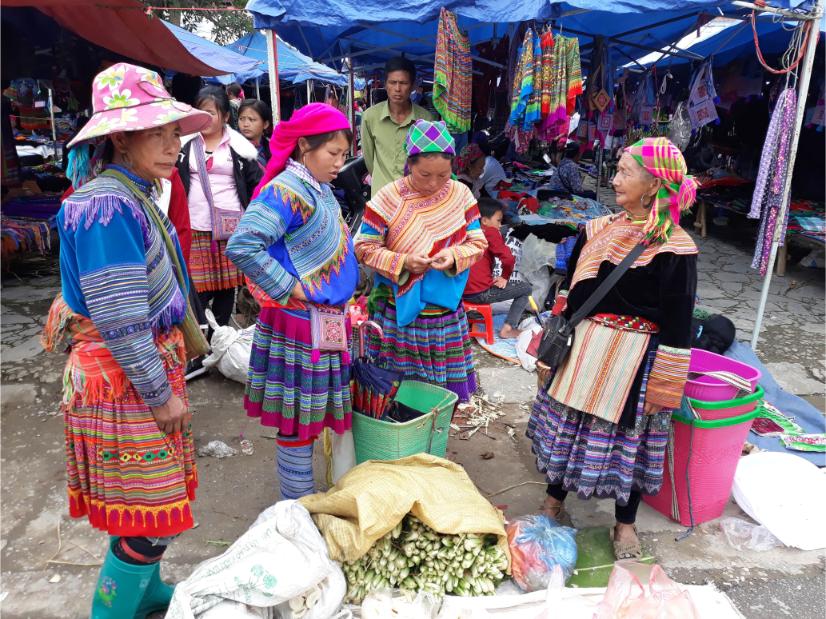
Shopping in Sapa: Tips for a Perfect Shopping Experience
In Closing: Shopping in Sapa, a True Adventure
The treasures you find while shopping in Sapa are more than mere souvenirs; they’re pieces of a world where tradition and artistry still thrive in harmony with nature. As you explore the markets, take your time, embrace the stories, and be ready to discover items that carry the legacy of Sapa’s people and landscapes.
Whether you’re drawn to a handwoven scarf, a silver ring, or a bundle of Red Dao herbs, each purchase is a memory that will bring the magic of Sapa back to life every time you look at it. So, pack a little extra room in your bag, bring an open heart, and prepare to shop in a way that leaves you richer in spirit. This is shopping in Sapa—a journey through beauty, culture, and heritage.
Feel free to reach out to Lux Travel DMC with any questions you have, and plan your Sapa trip with us!
